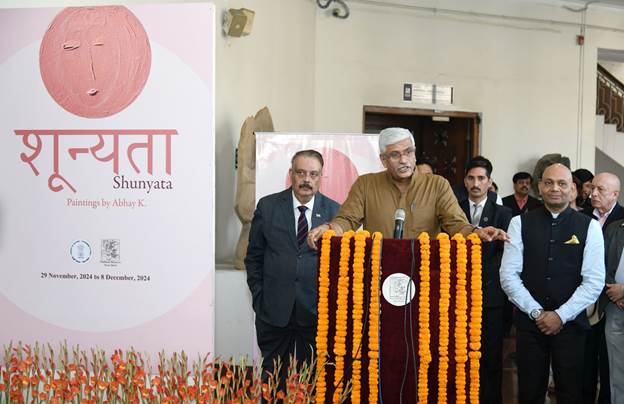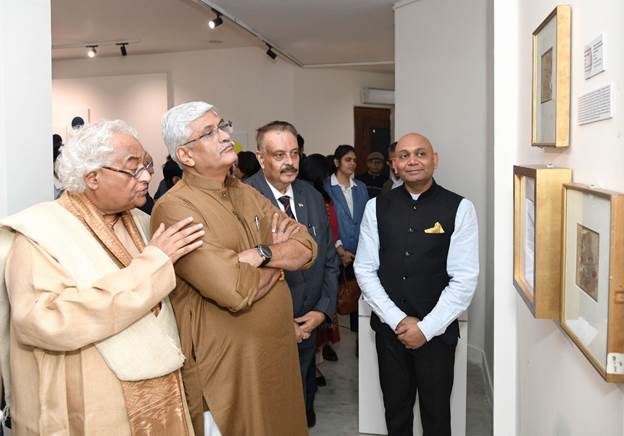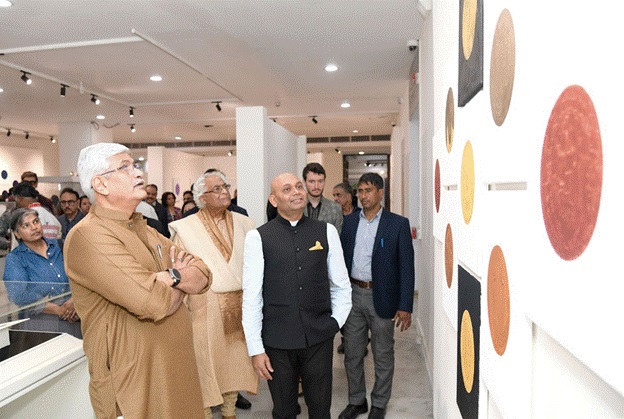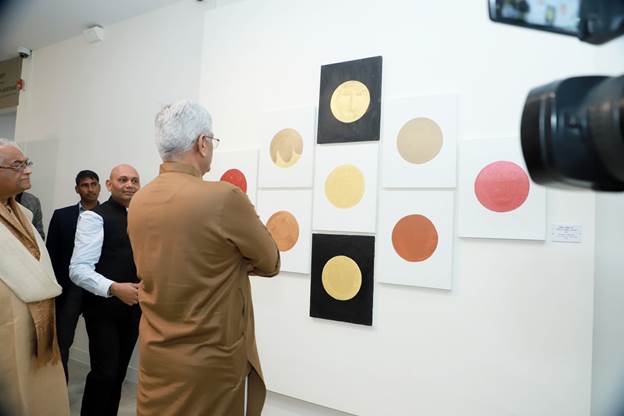Ministry of Culture
Union Minister of Culture and Tourism Shri Gajendra Singh Shekhawat inaugurates exhibition ‘Shunyata : Emptiness’ at the National Museum
Posted On:
29 NOV 2024 6:45PM by PIB Delhi
Union Minister of Culture and Tourism, Shri Gajendra Singh Shekhawat inaugurated the special exhibition ‘Shunyata: Emptiness’, today, at the National Museum, New Delhi. Dr. B.R. Mani, Director General of the National Museum, and a large gathering of dignitaries, diplomats, experts, researchers, artists, and museum professionals attended the programme. Speaking on the occasion, the Minister emphasised that the profound Buddhist concept of ‘Shunyata’ is an epicentre of all the philosophical branches, which is somewhat misconceived as synonymous with voidness. Still, it is a cohesive concept bracketing your existence that unites humanity, which is essential in the current state of geopolitical crisis on the global stage. It could only be resolved by following the principles of Dhamma preached by the Lord Buddha. Dr. B.R. Mani also pointed out that emptiness in philosophy and art could be perceived and appreciated within the visualisation of formlessness, which is also manifested in the Holy Relics of Buddha.


This exhibition is a collaborative effort led by Shri Abhay K, a poet, artist, and diplomat who serves as its curator. He worked alongside the National Museum's curatorial team, headed by Dr B.R. Mani, a renowned archaeologist and expert on Buddhist art and philosophy. The exhibition effectively communicates the essence of ‘Shunyata : Emptiness,’ as presented in the early Buddhist foundational text, the Prajnaparamita Sutra, by showcasing this profound concept through early Indian and contemporary art.

The exhibition features a vibrant collection of paintings by Shri Abhay K and an exquisite array of masterpieces from the National Museum of India, with the Holy Relics of Lord Buddha serving as the centrepiece. The theme focuses on the idea expressed in the Heart Sutra: “Emptiness is form; form is emptiness,” which is well articulated through the artworks. The artefacts and paintings serve as visualizations of emptiness.

In his artworks, Shri Abhay K posits that clinging to the idea of a fixed, inherent self and perceiving fleeting experiences as permanent is the root of suffering. Understanding the concept of emptiness is essential for breaking free from suffering and the endless cycle of birth and death known as samsara. By recognising the emptiness of all things, one can liberate themselves from these misconceptions and move towards enlightenment.

The artefacts from the National Museum's collection include sculptures and paintings centred on the Prajnaparamita discourse. One of the earliest objects in this exhibition is the stone-carved Buddhapada from Nagarjunakonda in Andhra Pradesh, which dates back to the 2nd century CE during the Satavahana dynasty. The collection also features stone sculptures from the Pala period, spanning the 8th to 12th centuries CE. These sculptures depict significant themes, including the eight great events in the life of Buddha (ashtamahapratiharya), the worship of Prajnaparamita Sutra and Vajrasattva by devotees, and panels illustrating Transcendental Buddhas (Panchtathagatas) and the eight great bodhisattvas (ashtamahabodhisattvas), alongside various bronze icons and Buddhist ritual implements.
Additionally, the exhibition showcases illuminated palm-leaf manuscripts and painted wooden covers of the *Astasahasrika Prajnaparamita Sutra* from the Pala period, enriching the cultural context of the display. An inscribed brick from Nalanda, Bihar, dating around 516-517 CE, contains the text of the Nidhana Sutra or the Pratitya Samutpada Sutra; this item, displayed alongside votive seals, vividly illustrates the manifestation of Buddhist philosophy in art. Moreover, a collection of inscribed painted manuscripts of the Prajnaparamita Hrdaya Sutra from Central Asia, alongside a fragmented mural painting featuring Buddhist disciples, underscores the historical spread of Buddhist art and philosophy rooted in India across Asia since ancient times.
Dr Abira Bhattacharya, Assistant Curator (Anthropology) at the National Museum, is the exhibition's co-curator. The exhibition will be open until 8th December, 2024, according to the museum's schedule and operating days.
****
BeenaYadav
(Release ID: 2079145)